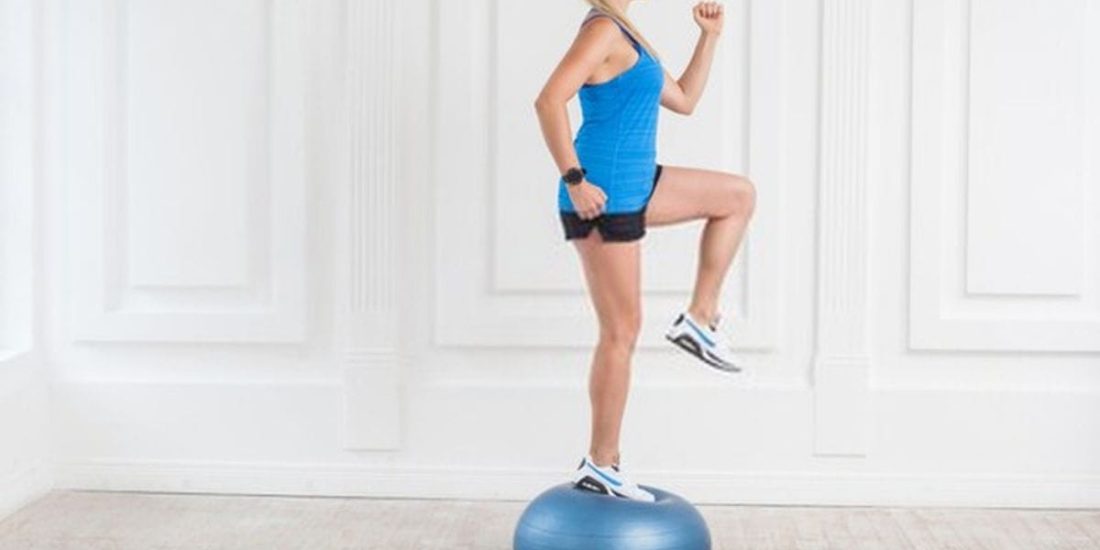
How to hone your reflexes for smoother mountain biking?
Content
Just imagine ... Beautiful sunny day, great hilly trail in the forest, enough to have some fun, great views. A day at the top!
You start downhill to get to the car park and there you find yourself on a very steep path full of stones, pebbles, roots and with a few holes 😬 (otherwise it's not funny).
A trail that we did not notice, and which we attack by gripping the steering wheel (or teeth, or buttocks) and saying to ourselves: "It passes, it passes, it passes", or "Everything will be fine"whichever self-persuasion method works best for you.
When you sink to the bottom, you don't know if the coming pains are associated with the entire exit or just these few meters. Of course, you won't say anything ... a matter of dignity and selfishness.
The problem here is not that you are adamant.
No.
You have to look for reflexes and anticipation of movement. And this is called ..."Proprioception"
The definitions we found didn't help us much, so we asked Pierre Miklich, an athletic trainer, if he could enlighten us on this and explain how to work on his proprioception on mountain bikes.
Because we want to be as light as air 🦋 when we solve such difficulties!
The Definition of Proprioception ... which we understand

When we look for a definition of proprioception, we are confronted with very abstract or scientific things.
For example, after consulting Larousse, we find the following definition:
“Proprioceptive sensitivity complements interoceptive (which touches the internal organs), exteroceptive (which touches the skin) and sensory sensitivity. This allows awareness of the position and movement of each body segment (such as the position of a finger in relation to others) and unconsciously gives the nervous system the information it needs to regulate muscle contractions for movement and maintain posture and balance.”
Yeah, well ... that doesn't help us all! 😕
So, Pierre Miklich explained to us such things, and there we understand better.
The proprioception, it's like a GPS inside our brain. It is a browser that allows us to perceive the exact position of our body in 3D in real time. This is what makes the smallest of our movements possible, such as writing, walking, dancing, etc.
When you are mountain biking, your GPS will let you know when you take the wrong path. If you are careful with your GPS, you can even anticipate route errors.
Well, proprioception is the same thing. Work allows better coordinate your movements et be more mobile sneak into singles to "ride clean". 💃
Why work on proprioception when you're mountain biking?
Hence, it is a matter of reflexes.
By improving them, the mountain biker will become sharper and more responsive in a critical situation. He can avoid obstacles, perform emergency braking, sharp jumps to avoid falling. Everything that we are looking for to overcome the technical routes, which we talked about at the beginning of the article.
Proprioceptive work operates on 4 points:
- deep strengthening of the joints, mainly ankle, knee and shoulder.
- development of muscle tone.
- coordination between different muscles.
- bodily perception.
As you can see, working on proprioception is not only for professionals. On the contrary, it is highly recommended for everyone and at any age, because it allows the development of reflex movements to avoid possible danger without forcing the brain to think. Your body, your muscles know what to do.
4 proprioception exercises for mountain bikers
Exercise 1
On a more or less unstable surface (foam mat, mattress, pillow), stand on one leg. Use swinging with the other leg to work more dynamically.

Exercise № 1 bis.
Try the same exercise with your eyes closed for a few seconds.
Tip: Increase the difficulty of this exercise, trying to destabilize yourself more and more.
Exercise # 2
Jump on one leg to the other leg. You can take several steps during the jump, with more or less width. This will improve the stability of your ankles. To increase the difficulty, try doing the exercise backwards.
Tip: increase your jump length
Exercise 3
Get a mountain bike hanger or wooden handle that serves as a hanger, and a wooden box or step about 40 to 50 cm high (a box with enough space to jump on with both feet).
Grab the hanger, hold it at the height of your mountain bike, and try jumping onto a wooden box with your feet together.
Increase the difficulty of the exercise by jumping faster, higher, backward (downhill), etc.
Tip: take it in stages!
Exercise 4

Wear sneakers or other shoes with good traction. Choose a natural area with rocks or cliffs.
Make small jumps from stone to stone without putting yourself in danger. Chain jumping, while gaining confidence, try to be faster and faster.
Tip: don't try to make huge jumps, the goal is accuracy and speed!
Credit
Thank you:
- Pierre Miklich, sports coach: After 15 years of racing XC mountain bikes, from regional racing to the Coupe de France, Pierre decided to put his experience and his methods at the service of others. For nearly 20 years he has trained, in person or remotely, athletes and people with high responsibilities.
- Aurelien Vialatt for beautiful photographs